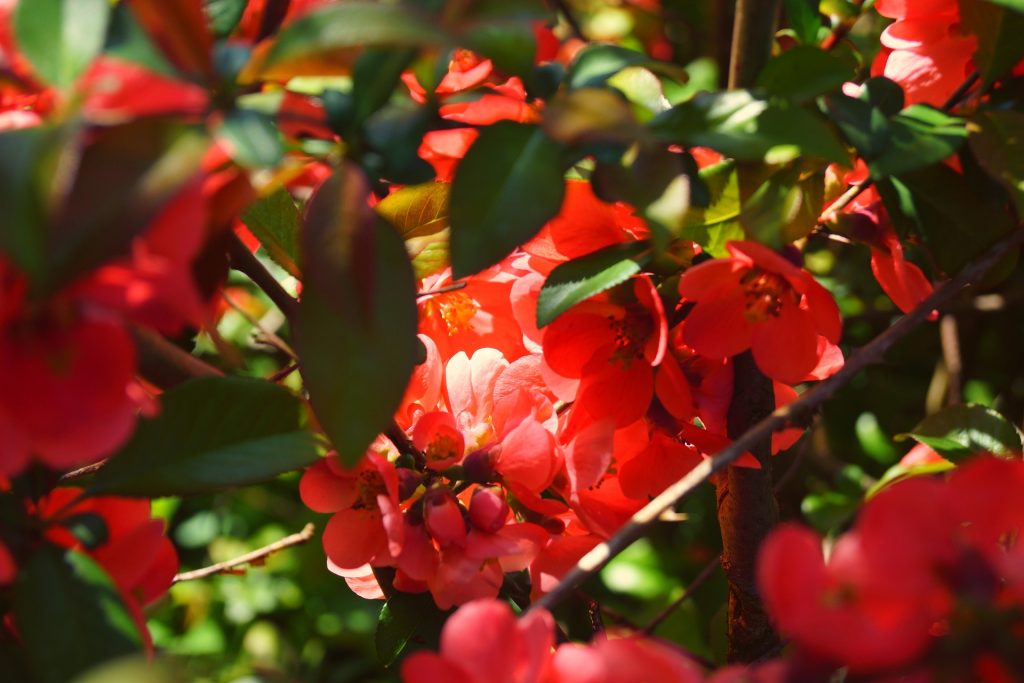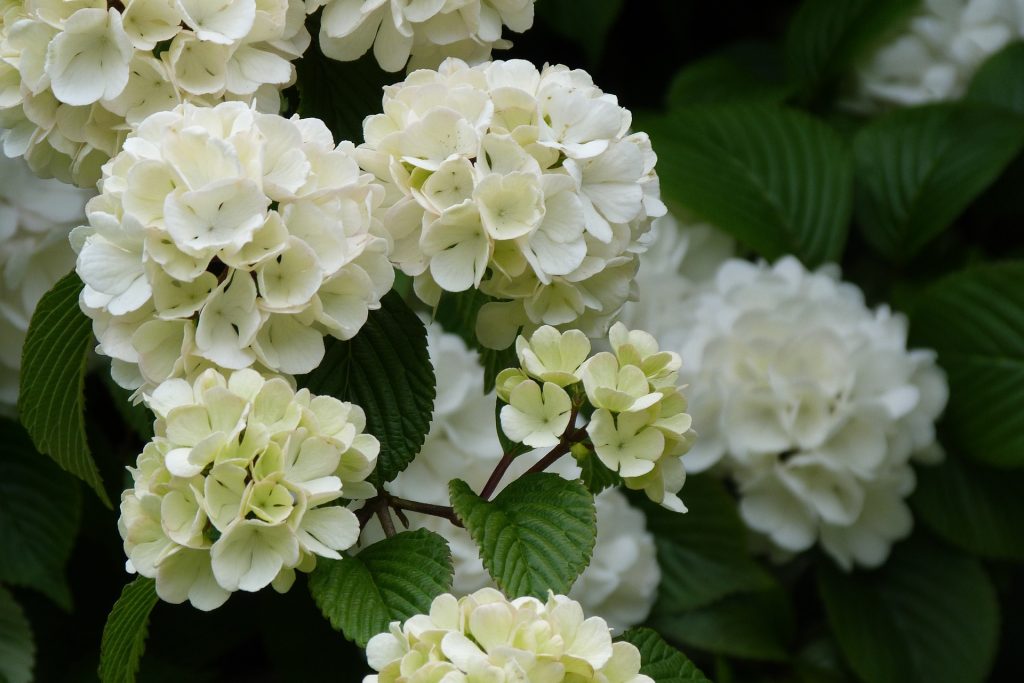Florida Native Plants for Residential Landscaping, Are you looking for beautiful and low-maintenance plants to enhance your landscaping in Florida? Look no further than the native plants that are perfectly adapted to the local climate. Not only are these plants easy to care for, but they also provide important benefits for the environment and wildlife.
Here are the top Florida Native Plants for Residential Landscaping
Firebush
Firebush is a stunning plant that produces bright orange and red flowers that attract hummingbirds and butterflies. This plant is drought-tolerant and can grow up to 8 feet tall, making it an excellent option for adding height and color to your garden.
If you’re looking for a plant that is sure to light up your garden with its stunning color and unique texture, look no further than the firebush. This striking shrub is known for its vibrant blooms and attractive foliage, making it a popular choice for gardeners who want to add a touch of the exotic to their landscape.
The firebush, also known as Hamelia patens, is a tropical shrub that is native to Central and South America. It features long, arching branches that are covered in glossy, green leaves that are offset by clusters of bright red, orange, or yellow tubular flowers.
These blooms are a favorite of hummingbirds and other pollinators, making the firebush a great choice for any garden that aims to attract wildlife.
In addition to its eye-catching blooms, the firebush is also prized for its versatility. It can be grown as a small shrub, a tree, or even trained as a hedge or espalier.
Plus, it is drought-tolerant and low-maintenance, making it a great choice for gardeners who want a plant that can thrive with minimal care.
But perhaps the most impressive feature of the firebush is its ability to thrive in a variety of conditions. It can grow in full sun or partial shade and can tolerate a range of soil types, making it a great choice for gardens in a wide range of climates and locations.
Overall, the firebush is a stunning and versatile plant that is sure to add a touch of tropical flair to any garden. With its striking blooms, attractive foliage, and ability to attract wildlife, it is a must-have for any gardener who wants to create a vibrant and dynamic outdoor space.
Florida Native Plants for Residential Landscaping Fun Fact: Firebush is also known as a “hammock plant” because it can grow in the shade of larger trees in Florida’s hammocks.

Coontie
Coontie is a unique plant that is both beautiful and practical. It produces striking cone-shaped flowers that eventually turn into red berries, which are a food source for many animals. Coontie is also the host plant for the endangered Atala butterfly, making it a critical plant for conservation efforts.
Coontie, also known as Zamia integrifolia, is a fascinating plant that is both beautiful and practical. This slow-growing, evergreen cycad is native to Florida and the Caribbean, and it has a long history of use as a food source, medicine, and ornamental plant.
One of the most distinctive features of the coontie is its unique fronds. The plant produces dark green, glossy leaves that are divided into leaflets, creating a fern-like appearance. These fronds add a touch of elegance to any garden, and they can also be used in floral arrangements or as a decorative element in the home.
But beyond its aesthetic appeal, the coontie is also a practical and versatile plant. Historically, the plant was a staple food source for Native Americans, who would grind the starchy root into a flour and use it to make bread and porridge.
Today, the coontie is still used in cooking, and its root has a sweet, nutty flavor that can be used in a variety of dishes.
In addition to its culinary uses, the coontie also has a long history of medicinal use. The plant contains compounds that have been shown to have anti-inflammatory, analgesic, and antibacterial properties, making it a popular choice for treating a range of ailments.
Finally, the coontie is also a great choice for gardeners who want a low-maintenance plant that is easy to grow and care for. It is drought-tolerant and can thrive in a variety of soil types, making it a great choice for gardens in a wide range of climates.
The coontie is a fascinating and versatile plant that is sure to add a touch of elegance and practicality to any garden. Whether you are looking for a beautiful ornamental plant, a tasty ingredient for your next meal, or a natural remedy for common ailments, the coontie is a must-have for any gardener who wants to create a dynamic and useful outdoor space.
Florida Native Plants for Residential Landscaping Fun Fact: Coontie was used by Native Americans as a food source, and the roots were ground into flour for making bread.
Simpson’s Stopper
Simpson’s Stopper is a versatile plant that can be used as a hedge or specimen plant in your garden. It produces fragrant white flowers and red berries that are a food source for many birds.
Simpson’s Stopper is also drought-tolerant and can grow in a wide range of soil types.
Simpson’s Stopper, also known as Myrcianthes fragrans, is a stunning native plant of Florida that is sure to catch your eye with its beautiful flowers and unique appearance.
This evergreen shrub is commonly found in coastal areas and can grow up to 20 feet tall, making it a great addition to any garden or landscape.
One of the most striking features of Simpson’s Stopper is its gorgeous white flowers that bloom in the summer and fall. These fragrant flowers attract a variety of pollinators such as butterflies and hummingbirds, making it a popular choice for gardeners who want to attract wildlife to their yards. The flowers are followed by small, bright red berries that are a favorite of many birds.
But Simpson’s Stopper is more than just a pretty face. This plant is also highly valued for its medicinal properties. The leaves and bark contain compounds that have been used for centuries in traditional medicine to treat a variety of ailments, including fevers and coughs.
In addition to its ornamental and medicinal uses, Simpson’s Stopper is also an excellent choice for landscaping in Florida. It is drought-tolerant once established and can thrive in a wide range of soil types. It can be used as a specimen plant, as a hedge, or in a mixed planting bed.
When planting Simpson’s Stopper, it is best to choose a location that gets full sun to partial shade. Regular watering during the first year after planting will help the shrub establish its root system, but after that, it is relatively low-maintenance.
Pruning can be done in the late winter or early spring to maintain its shape and encourage new growth.
Simpson’s Stopper is a stunning and versatile native plant that is perfect for any Florida garden. Whether you are looking for a beautiful flowering shrub or a plant with valuable medicinal properties, Simpson’s Stopper is sure to exceed your expectations.
Florida Native Plants for Residential Landscaping Fun Fact: The red berries of Simpson’s Stopper are edible and can be used to make jelly.

Coral Bean
Coral Bean is a striking plant that produces beautiful red flowers that attract hummingbirds. It can grow up to 10 feet tall and is drought-tolerant once established. Coral Bean is also the host plant for the silver-spotted skipper butterfly.
Coral bean, also known as Erythrina herbacea, is a stunning plant that is native to Florida and the southeastern United States. With its vibrant red flowers and striking foliage, it is a must-have for any Florida garden.
The coral bean is a deciduous shrub or small tree that can reach up to 15 feet in height. Its leaves are bright green and are divided into three leaflets, creating a tropical, palm-like appearance. But the real showstopper is the plant’s bright red flowers, which bloom in clusters from late spring to early summer.
These flowers attract a variety of pollinators, including hummingbirds and butterflies, making the coral bean an excellent choice for gardeners who want to create a wildlife-friendly space.
In addition to its ornamental value, the coral bean also has a number of practical uses. The plant is a natural source of the alkaloid erythrin, which has been used in traditional medicine to treat a variety of conditions, including coughs, colds, and fevers. The plant’s seeds are also edible and have been used as a food source by Native Americans.
When planting coral beans in Florida, it is important to choose a well-draining location that gets plenty of sun. The plant is drought-tolerant once established, but it will need regular watering during the first few months after planting. Fertilizing with a balanced, slow-release fertilizer can also help the plant thrive.
The coral bean is a stunning and practical plant that is perfect for Florida gardens. Whether you are looking for a showy ornamental plant or a natural source of medicine, the coral bean is a great choice that is sure to impress.
Florida Native Plants for Residential Landscaping Fun Fact: The seeds of Coral Beans are poisonous and can cause vomiting and diarrhea if ingested.

Walter’s Viburnum
Walter’s Viburnum is a versatile plant that can be used as a hedge or screen in your garden. It produces fragrant white flowers and blackberries that are a food source for many birds. Walter’s Viburnum is also drought-tolerant and can grow in a wide range of soil types. Walter’s Viburnum, also known as Viburnum obovatum, is a versatile and attractive evergreen shrub that is native to Florida and the southeastern United States. With its glossy green leaves and fragrant flowers, it is a popular choice for gardeners looking to add some year-round interest to their landscape.
This hardy shrub can grow up to 12 feet tall and wide, and its dense foliage provides excellent screening and privacy. The leaves are dark green and obovate in shape, creating a lush and tropical feel. In the spring, Walter’s Viburnum produces clusters of small white flowers with a delightful fragrance that attracts pollinators like bees and butterflies.
One of the great things about Walter’s Viburnum is that it is a low-maintenance plant that is perfect for Florida’s hot and humid climate. It is drought-tolerant once established and can handle a wide range of soil types. However, it does prefer well-draining soil that is rich in organic matter.
Walter’s Viburnum also has a number of practical uses. Its dense foliage makes it an excellent choice for creating hedges or screens, and it can also be used as a foundation planting or as a backdrop for other flowering plants. The plant’s fruits are also a valuable food source for wildlife like birds and squirrels.
When planting Walter’s Viburnum in Florida, it is best to choose a location that gets partial shade to full sun. Regular watering during the first year after planting will help the shrub establish its root system, but after that, it is relatively low-maintenance. Pruning can be done in the late winter or early spring to maintain its shape and encourage new growth.
Walter’s Viburnum is a versatile and attractive shrub that is perfect for Florida gardens. Whether you are looking for a natural privacy screen or a fragrant addition to your landscape, Walter’s Viburnum is a great choice that is sure to impress.
Florida Native Plants for Residential Landscaping Fun Fact: The leaves of Walter’s Viburnum have medicinal properties and have been used to treat headaches and fever.
Florida Native Plants for Residential Landscaping
By incorporating these Florida native plants into your residential landscaping, you can create a beautiful and sustainable oasis that provides important benefits for the environment and wildlife. So why not give it a try and see the difference it can make?
In addition to their aesthetic appeal, native plants are also beneficial for the environment. They require less water and fertilizer than non-native plants, which helps to conserve water resources and reduce pollution from runoff. They also provide important habitats and food sources for wildlife, which is especially important in urban areas where natural habitats are scarce.
According to the Florida Native Plant Society, there are over 4,000 species of native plants in Florida. This makes it easy to find the perfect plants for your small garden, no matter your preferences or needs. Plus, many nurseries and garden centers now specialize in native plants, making it easier than ever to find and purchase them.
Another benefit of native plants is that they are often more resistant to pests and diseases than non-native plants. This means that you can spend less time and money on pest control and more time enjoying your garden. Plus, since they are adapted to the local climate, they are often more tolerant of extreme weather conditions like drought and heat.
So, whether you’re a seasoned gardener or just starting, consider incorporating some of these Florida native plants into your small garden. Not only will you be supporting local ecosystems, but you’ll also be creating a beautiful and low-maintenance oasis that you can enjoy for years to come.

The Importance Of Watering
Water is one of the most important factors in the health and vitality of any plant, and this is especially true for Florida’s native plants. While they are adapted to the local climate and can tolerate periods of drought, they still require regular watering to thrive.
In general, native plants require less water than non-native plants, but it’s important to remember that each plant has its specific water requirements. Some plants, like succulents and cacti, can go weeks or even months without water, while others, like ferns and orchids, require more frequent watering.
When it comes to watering your native plants, there are a few key things to keep in mind. First, it’s important to water deeply and infrequently, rather than giving your plants frequent shallow waterings. This will encourage the roots to grow deep and strong, which will help the plant to better withstand periods of drought.
Second, it’s important to water your plants at the right time of day. Watering in the early morning or late evening, when the sun is not as strong and temperatures are cooler, will help to reduce water loss due to evaporation and ensure that your plants have the water they need to stay healthy.
It’s important to monitor your plants closely and adjust your watering schedule as needed. Pay attention to the soil moisture level and the appearance of your plants. If the soil is dry or the leaves are wilting, it’s time to water. If the soil is consistently wet or the leaves are turning yellow or brown, you may be overwatering.
By following these simple tips and paying close attention to your plant’s water needs, you can help ensure that your Florida native plants thrive and continue to provide beauty and benefits to your small garden for years to come.
When it comes to designing your small Florida garden, one of the key considerations is choosing the right plants to pair with your native plants. By selecting complementary plants that share similar growing requirements and aesthetics, you can create a harmonious and visually appealing garden that will thrive in the local climate.
One great option for pairing with native plants is other low-maintenance, drought-tolerant plants that are well-adapted to the Florida climate. Some great choices include succulents, cacti, and other arid plants, as well as ornamental grasses and wildflowers.
Another option is to select plants with similar growth habits and textures that will complement your native plants. For example, if you have a tall, spiky native plant like the Sabal Palm, you could pair it with a shorter, rounded plant like the Dwarf Yaupon Holly to create a pleasing contrast.
It’s also important to consider color when selecting plants to pair with your native plants. Look for plants with blooms or foliage that will complement or contrast with the colors of your native plants. For example, you could pair the vibrant purple blooms of the Florida Native Wild Petunia with the soft blue-gray foliage of Blue Daze.
Finally, don’t forget to consider practical considerations like soil type, light exposure, and water requirements when selecting plants to pair with your native plants. By choosing plants that share similar growing requirements, you can help ensure that your garden thrives and requires minimal maintenance.
Drip Irrigation Installation & Repairs
If you’re looking for a hassle-free way to keep your plants healthy and vibrant, consider installing a drip irrigation system. Drip irrigation is a highly efficient method of watering that delivers water directly to the root zone of your plants, reducing water loss due to evaporation and ensuring that your plants get the water they need to thrive.
At American Property Maintenance, we specialize in installing high-quality drip irrigation systems that are tailored to your specific needs and preferences. Our team of experienced professionals will work closely with you to design and install a system that meets your unique requirements and provides reliable, low-maintenance watering for your plants.
With a drip irrigation system from American Property Maintenance, you can enjoy a beautiful, healthy garden without the hassle and expense of traditional watering methods. So why wait? Contact us today to schedule a consultation and start enjoying the benefits of drip irrigation for your small Florida garden!
